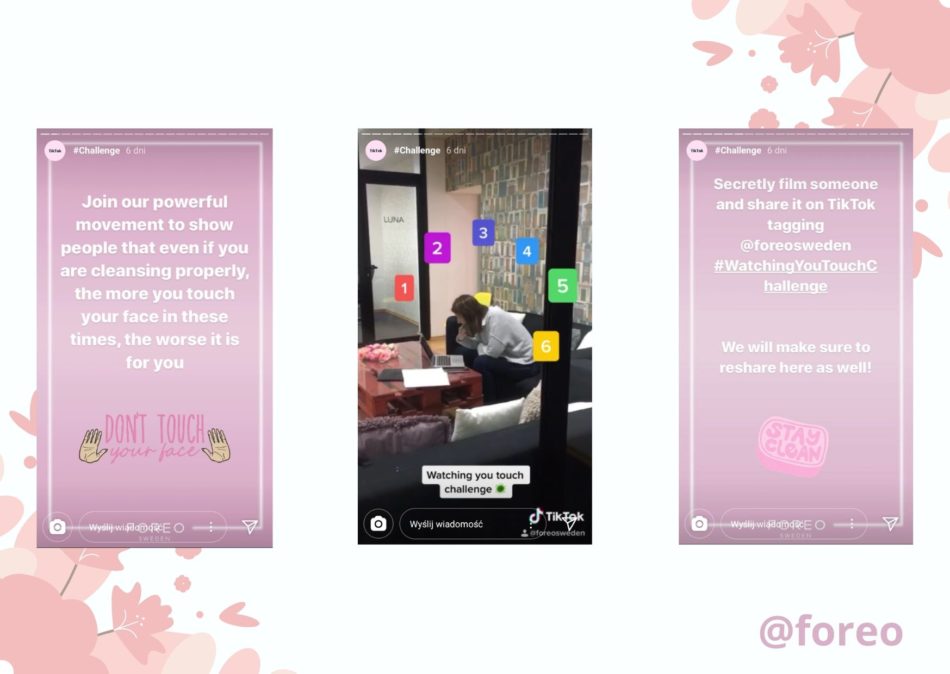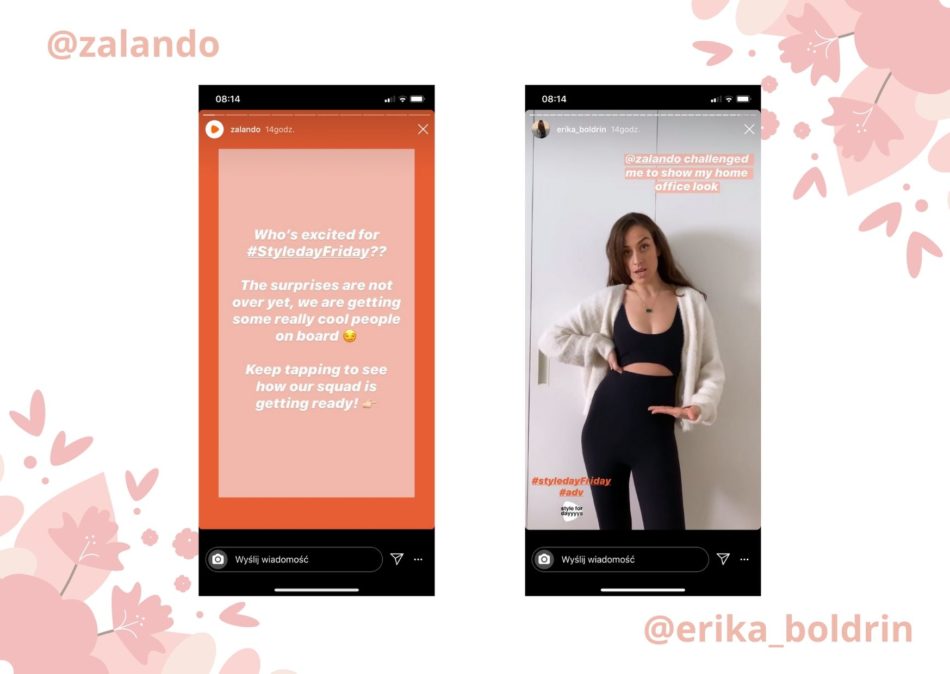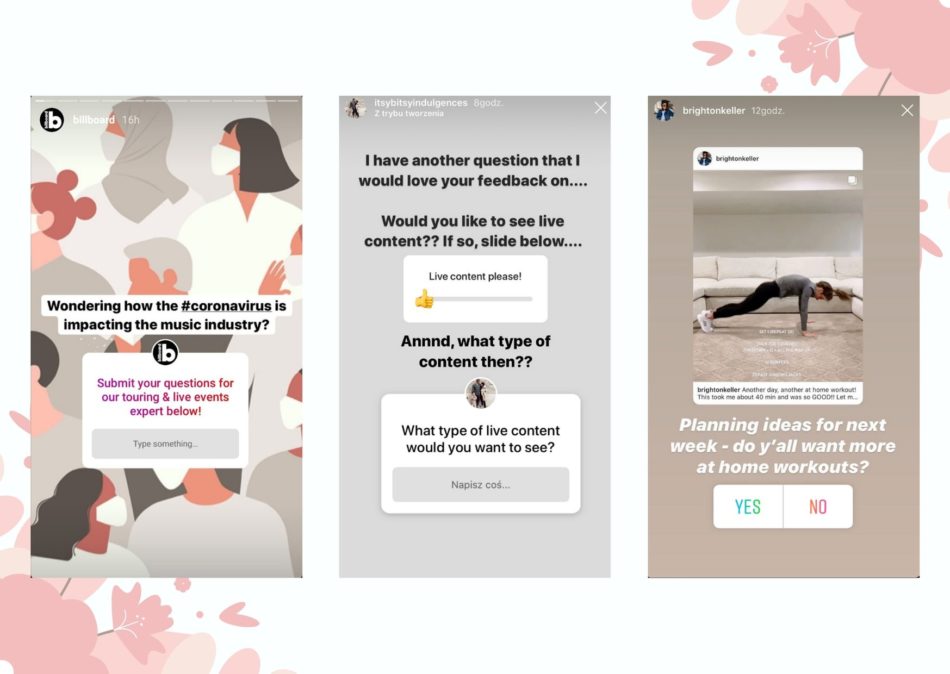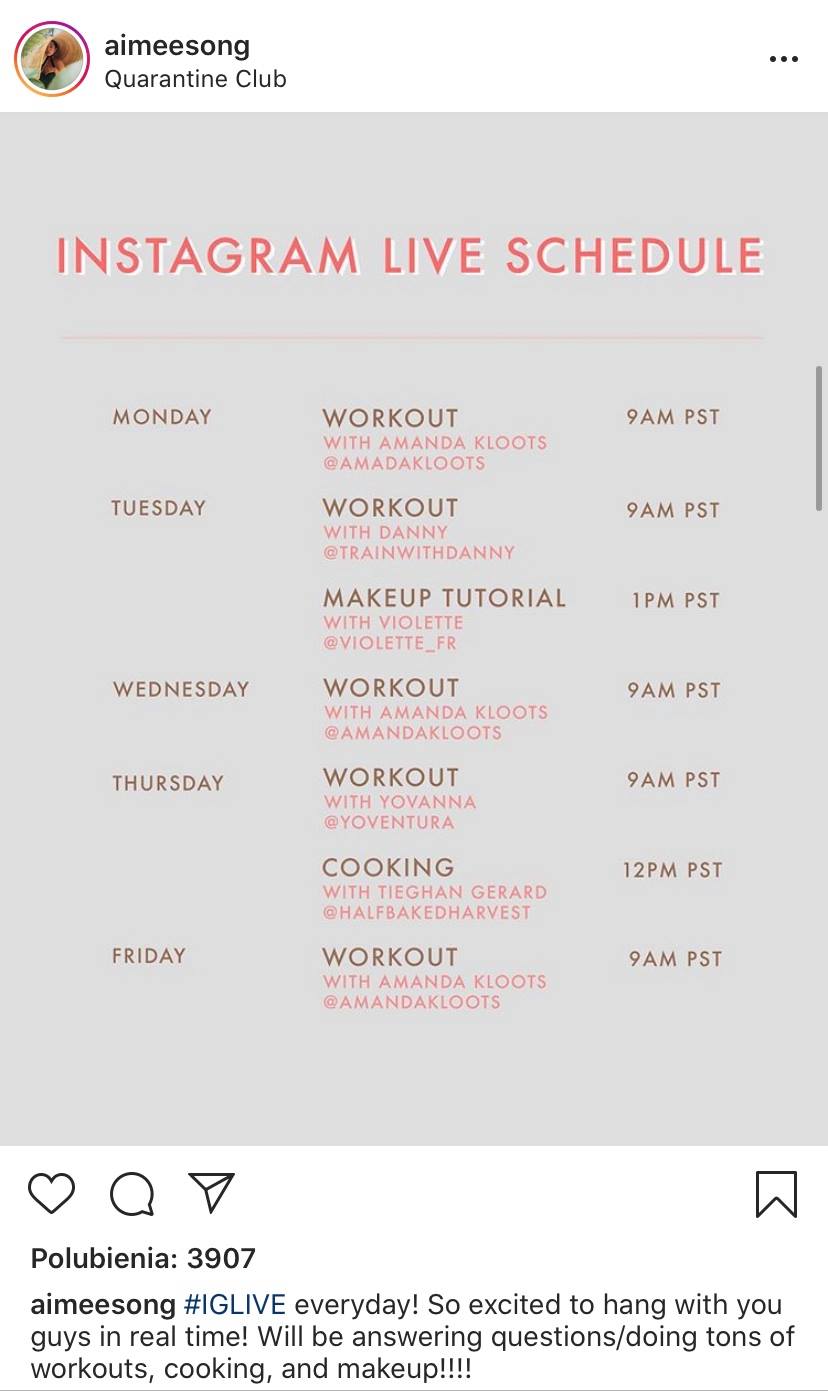Social media have their own rules – the content must be pleasant, simple and understandable. But is it always supposed to be like this? We have all seen social media campaigns that made a real impact on society. They served a good cause or increased social awareness about an important issue.
Today, we all face a difficult and economically uncertain time. How can we continue our business activities on social media in the context of the COVID-19 pandemic? What content should we publish to keep our clients interested in our services or products without misusing the subject of the coronavirus?
Many social media marketers experience these moral dilemmas – what should I publish? Isn’t my content too trivial or inappropriate? Will my followers feel offended? Or maybe just the opposite – they want to see entertaining content even more now than usual? Many marketers are asking themselves these questions right now.
First and foremost, we need to take into account that the traffic on social media channels, and online in general, has increased. People will get bored of knitting or any other hobby they have spontaneously taken up for the time of the quarantine, but they will most probably never get tired of Netflix and will still spend time on Facebook and Instagram. Therefore we definitely shouldn’t give up on creating and publishing content on social media, just because we are afraid that somebody will find it inappropriate. We must adapt to the new situation and publish relevant content.
Fortunately, our advantage is that our marketing strategy is based on online activities. Thus we already have our audience and following there – on Instagram, Facebook, and mailing lists. We are lucky, in a sense, that we already know how to manage marketing online. On the other hand, other companies are forced by the circumstances to shift their marketing from offline to online and they have only just started their journey.
Enough theory, we have prepared a collection of content formats (including examples) that might inspire you to create new content in these difficult times. We have also prepared answers to the most important questions that marketers ask themselves nowadays.
We hope that we’ve piqued your curiosity. Let’s begin! 🙂
#1 Shared activities and rituals
Have you wondered what you and your followers can do together?
Aimee Song, a fashion blogger, designer and Instagram influencer with 5.5 million followers, keeps her audience engaged by posting almost every day. For the duration of the quarantine, she has prepared a special schedule of activities that she and her fans can do together by means of real-time IG Lives. In case you wouldn’t be up to a workout or cooking at the scheduled time, don’t worry, because just like Instagram Stories, they will be available for 24 hours.
What’s the idea behind shared activities? It’s an opportunity for content creators and their audience to escape the tragic situation that we have found ourselves in. These activities and rituals, shared or just witnessed on social media, become moments that they are waiting for. They provide some entertainment in otherwise monotonous life in quarantine. At the same time, you build a community centered around your brand and you connect with your audience on a deeper level. After all, we are in this situation together.
#2 Challenges
If you are looking for a challenge or a new activity to pass the time, but you need some external motivation, social media is your place to go. Organizing challenges is a great way to engage with your audience and encourage them to partake in some activities.
Westwing Home & Living, the producer of stylish furniture and home decor, is encouraging its audience on Instagram to post pictures of their home office settings with the hashtag #MyWestwingHomeOffice. Fans feel motivated to take care of their living space to create a picture-perfect setting and, at the same time, they can forget about the gloomy circumstances and unleash their creativity. The authors of the best pictures have the chance to win 500 euros.
The beauty brand FOREO has organized a challenge on TikTok which is perfectly consistent with the brand message, while simultaneously fitting the trending topic of personal care during the pandemic. The goal of the challenge is to highlight the importance of personal hygiene and caution FOREO’s followers against touching their faces too much. The challenge makes us realize how often we do that. FOREO then reposted the TikTok videos to their Instagram Stories.

Zalando asked their fans to show what outfit they chose to work from home on Friday, and to post it with the hashtag #StyledayFriday.

#3 Live streams
Let’s be honest – anyone can prepare a Live stream nowadays. You just need three basic things: your smartphone, a good Internet connection, and an idea. I’m sure that all of us have something interesting to show to the world and it doesn’t have to be strictly connected with our everyday jobs. Sometimes, you don’t even need to prepare too much, your knowledge and experience will be enough. Just be natural, relax, and show the world something that you are expert in. Today’s social media users love authenticity and they will appreciate it.
Regardless of the type of business you are active in, Live is a trending social media format that you should consider implementing in your strategy.
MOE Assist, project management tool for influencers, organized weekly talks with industry experts to discuss perspectives on the influencer marketing industry in the times of unprecedented changes.
We are used to Lush Cosmetics’ vocal stand on different political and social matters, as well as their great customer care. It’s not surprising, that in the time of the pandemic they are not leaving their audience alone. On the contrary, Lush has prepared a schedule of live sessions on different topics and emphasized many times that their customers can always rely on the Lush team.
Live is a great format to show social media users our brand, our interests and goals and become more credible and authentic.
#4 Guidebooks
If you don’t feel comfortable speaking to the camera, don’t worry – there are other options. You can create written content or edited videos.
This is the best moment to share your knowledge with your audience. Preparing a guidebook takes a lot of time and preparation. If you’ve always had the intention to prepare it, but you never had enough time, then this excuse is no longer valid. Moreover, remember that this is the time when people are looking for knowledge online and they want to improve their qualifications to stay competitive on the market after the pandemic.
We have also responded to this need by preparing a quarantine reading list, including our favorite online courses, ebooks, and TED talks. We highly recommend it!
If you aren’t convinced, because you imagine a guidebook to be a 100-page long ebook, we assure you that it doesn’t have to be the case. In fact, it’s rarely the case, because nobody has time to read all of that, even during a quarantine. Moreover, producing an ebook makes sense when you already have an engaged audience who is waiting for something extra from you. If you haven’t had the opportunity to create a community around your brand yet, then it might be difficult to reach the right audience in such a short period of time and your debut will go unnoticed. In that case, we would recommend you to start with a format that requires less work and isn’t as time-consuming.
Guidebooks come in different shapes:
- Blog post
- Facebook, Instagram post or a series of posts
- Instagram Stories
- Video on YouTube or IGTV
- Ebook
Ahrefs, a popular SEO tool has recently uploaded their complete Blogging for Business course on YouTube. Obviously, it’s for free.
Frederik Bille Brahe, a restorer from Copenhagen, had to close his popular restaurants and is now posting his recipes on Instagram.
La Roche Posay brought together a group of professionals – a dermatologist, a clinical dietician, a yoga instructor, a paediatrician, a physiotherapist, and a scientific director, to answer questions from their audience on Instagram. The Stories with these interviews are then being grouped and saved on the profile in the Highlights section, so that the profile’s followers can watch them any time they want.
#5 Podcasts
The next format that is becoming more and more popular is the podcast.
Producing a podcast is a time-consuming task. This format requires specific equipment, suitable software for recording podcasts and a lot of preparations. Even if your podcast will not go public right away, maybe it’s the right time to consider using this format and start preparations. You and your team can brainstorm the topics, write scripts, order equipment, and get used to how your voices sound on the microphone.
If you would like to start podcasting, a reasonable first step would be to listen to recommendations and tips provided by more experienced marketers. Ian Anderson Gray, the author of the Confident Live Marketing Podcast helps entrepreneurs level up their impact with live videos, podcasts, and webinars. His show is focused on the three fears that podcasting beginners usually have – live video camera fear, live video equipment and content marketing in general. In the podcasts, not only will you listen to Ian himself, but also to other marketing experts he invites to his show.
#6 Recommendations
The Internet has experienced an influx of articles with books, movies, and series recommendations. Most of us have already prepared a long ‘to read’ or ‘to watch’ list that will suffice for the next few months. Obviously, we hope that the quarantine wouldn’t last so long.
Your own recommendations of trusted products or services are valuable, as long as they are really your own and not simply a collection of examples taken from a dozen other articles you found online. To make a unique and successful list of recommendations, you should find your niche, something you are specialized in and suggest products or services that you have actually tested yourself.
For an e-commerce company, such content is relatively easy to produce. But even if you don’t own an online shop, you can prepare a list of recommendations of your favorite SaaS tools, useful gadgets or any other equipment that helps you at work. If you own a corporate blog, it’s a good idea to prepare a list of the most popular blog posts (blog posts with the biggest traffic) or just the opposite, a list with some quality posts that haven’t received enough of readers’ attention over the last few years. Use this opportunity to recycle some good old content.
#7 Show that you are helping
Although CSR usually applies to corporations and big companies, in the time of the pandemic we should all promote social responsibility.
Top influencers, micro influencers, corporations, the biggest global brands, as well as local businesses – everyone can counteract the COVID-19 pandemic by supporting the healthcare system and encouraging people to #stayathome on their social media channels. We have recently conducted an analysis to check how many times the hashtag #stayathome was used on Instagram in the European countries who suffer the most from the pandemic, and how eagerly people engaged with these posts. Just between 20th and 25th March the Spanish have used their local equivalents of #stayathome ( #quedateencasa etc.) 262,277 times!
The above-mentioned data is proof of the worldwide mobilization of businesses, influencers and basically everyone else active on social media, to stop the spread of the virus.
Remember that publishing a post informing that your organization has, for example, helped the local hospital, should be explicitly informative. Companies shouldn’t shift to CSR as a substitute for advertising or a pretext to brag about their great revenues that allow them to fund medical equipment. Such a message will only discourage your audience and be highly inappropriate. Instead, simply inform about your proactive attitude and your audience will appreciate it. Your reputation can only gain from such an initiative.
As China has suffered acutely from the pandemic, so have the luxury brands which rely heavily on the Chinese market. No wonder the biggest fashion brands have made substantial donations to help the Chinese health system. For example, the LVMH, the French luxury conglomerate and owner of Louis Vuitton, Christian Dior, Givenchy, Bulgari, Tiffany & Co., Moët & Chandon and hotel chain Belmond, announced a donation of 16 million yuan (US$2.2 million) to The Red Cross Society of China to ease the Wuhan crisis.
When the COVID-19 crisis hit Italy, the home of internationally famous fashion brands, the fashion industry also showed its support and donated millions of euros to organizations fighting the pandemic.
What to do when you have to publish the content you have prepared before the pandemic?
A few weeks ago, nobody expected the situation that we found ourselves in. At the beginning of the year, we prepared strategies, arranged collaborations, and produced content with a long-term perspective.
Some of us will manage to publish according to their content calendar, others will have to postpone their activities to an undefined future.
The smaller brands, who manage their communication in-house, have it easy because they make decisions about their social media on their own. Influencers, however, are often bound by contracts with other parties.
What can you do in such a situation?
If you have scheduled posts, which now seem inappropriate, the safest solution is to edit the copy and the visual, so that the post is consistent with the current situation. However, if it’s not possible you should postpone the publication.
If you will have to fulfill the contract and your obligations and publish the previously scheduled material, be honest about it with your audience. Explain to them how influencer marketing works. They were just as taken aback by the pandemics and the ensuing restrictions as you were. However, your audience might not know how the business works and that such collaborations are planned well in advance, whereas breaching the contract could cost you a considerable fine. Your audience will understand and who knows, maybe you will score an extra few points for your honesty and authenticity.
What if I still don’t know what to publish?
You still don’t know what you should publish? What would your audience like to receive from you?
The solution is easy, ask them!
Nowadays, it’s easier than ever to obtain information about what your viewers are really thinking. Simply post a Facebook or Instagram Story with some interactive stickers that allow the users to vote or answer a question with just a few clicks.

In most cases, you will probably be able to publish the content you always did. After all, it’s not a coincidence that they have watched your Stories – they like what you have to say and show to the world. For many of your fans, your content will be an escape from the boring, quarantined reality.
Learn what to publish with Sotrender analytics
If you would like to make the most of the increased online traffic, start by analyzing the content that you have published in the previous months. Check:
- How many views did you gather on YouTube, Instagram Stories or what was your reach on Facebook in the previous months?
- How big was the traffic on your blog? Which posts were the most popular?
- Which posts on Facebook and Instagram had the biggest engagement?

Analysis of the most successful posts, Sotrender
If your brand is just starting their online marketing activities and you need to refresh your knowledge about your target group (their interests and behaviour) or analyze how your audience has changed in the last few weeks, we would like to remind you about Sotrender’s custom reports.








